Overview
A successful Minnesota microlender since 1989, the Entrepreneur Fund consistently increased its small business loan volume each year. By 2008, they were originating 40+ small business loans per year with a business development staff of seven.
Challenge
2010 was the beginning of a shift for the Entrepreneur Fund. Some of the staff took courses from National Development Council to sharpen their skills, while leadership began to look at ways to grow revenue and increase sustainability. They added services specifically targeted to entrepreneurs seeking to grow their business by improving skills, growing networks and implementing specific growth plans. An ambitious target was set to engage 500 entrepreneurs inachieving growth goals by 2017.
The Entrepreneur Fund was positioned for growth, becoming an SBA 7a lender in 2010, but faced a huge challenge in 2011. They lost a significant funding source, forcing them to lay-off staff.
“To survive, we needed to take a hard look at our sustainability rate, how we got paid, and how to make loans with a leaner and meaner staff,” said Lattery. “We decided to bring on technology to help us makes faster decisions so we could do more microloans with the staff we had left.” In 2013 the Entrepreneur Fund brought on a new loan software product, lending referral partners were added, and lending limits were increased to $250,000. As loan volume and loan size began to grow, Lattery said they also began to look at how to increase their operational capacity to further ensure that small businesses had the capital they needed to grow. They had seen first-hand how technology had improved the efficiency of their microlending efforts and started to look for a system that would allow them to originate larger loans for a variety of purposes including construction and business acquisition.

SPARK Solution
“I was one of the biggest bottlenecks,” Lattery honestly admits. “I would get packets from the lenders, with layers of documents, and since I had to take them to committee I spent a ton of time reviewing, re-analyzing and trying to make every aspect clearly understood.”
Lattery says they have now added SPARK, which has changed how they operate and what they do. “JumpStart prepared us to have a transparent loan process and SPARK gave us the ability for everyone on the lending and credit teams to take part in that process,” said Lattery.
He talked about how the borrower can start building their documents in SPARK and by the time the lender gets involved, everything is in one place. Previously, loan status was tracked on a spreadsheet and paperwork could have been on someone’s desk or perhaps on the shared server, leading to frustrated customers and staff.
“I saw the big picture and knew we had problems” said Lattery. “We can see that our process is becoming clear and we have stepped up our game because of the checks and balances provided by the system.”
Lattery says he fully expects to send 90% of their deals through SPARK in 2017 and that’s only because not everyone in their area has broadband.
He added: “I truly appreciate working with SPARK and Erik Swenson, who has onboarded and continued to support us, he is amazing. We had another piece of software put in at the same time as SPARK and the experience was night and day. Erik is responsive and so patient. He is very careful to tell us not only the what, but the why. From my heart, I only have glowing remarks for what he has done for us.”




